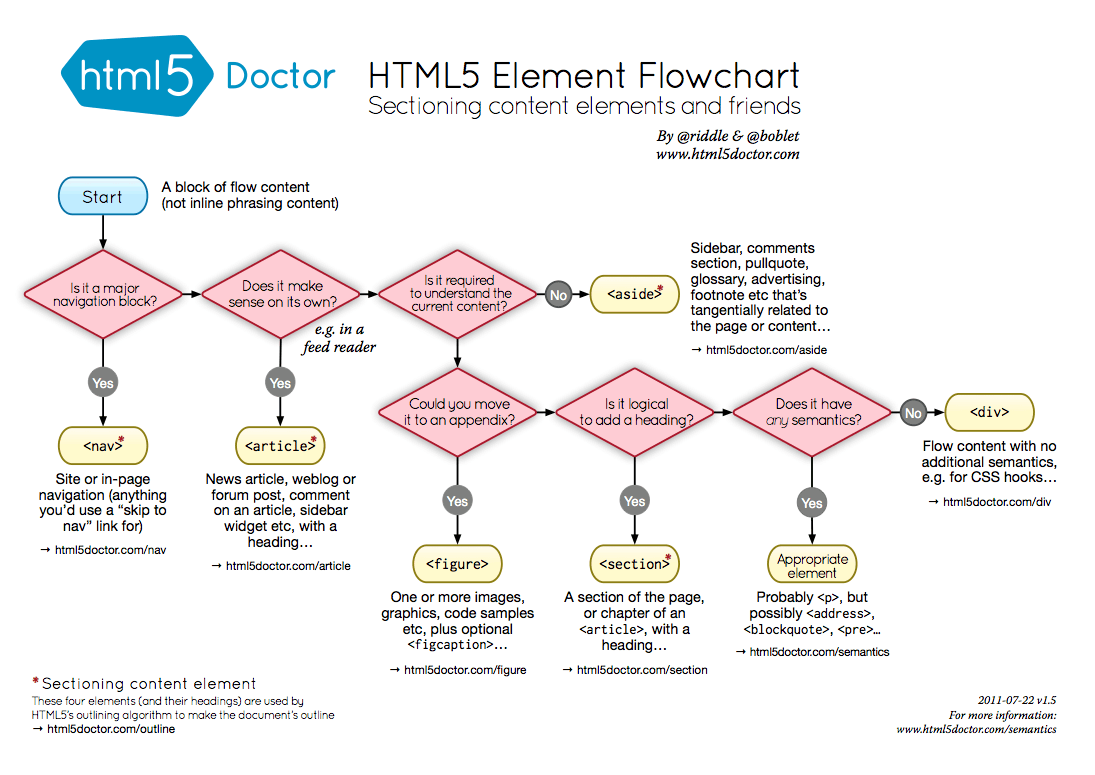Blind Faith and
Best Practices
Starting Out
Programmer's Journey
There must be a better way
At some point while learning, we've all come to this point, right?

Enter...The Best Practice
Commercial or professional procedures that are accepted or prescribed as being correct or most effective.
Best Coding Practices
==
a set of informal rules that the software development community has learned over time which can help improve the quality of software.
Misguided?
- Most "Best Practices" in Software Engineering are there to keep bad programmers from doing too much damage
- The only "best practice" you should be using all the time is "Use Your Brain"
Blind Faith?
==
a belief without true understanding,
perception, or discrimination
Are Best Practices just blind faith in
people that came before us
or that we deem smarter than us?
My Goal
To encourage everyone to look at best practices and know WHY they use the ones they do, and WHEN to discard ones that no longer are effective.
And To Encourage Best Practices...But
Make sure they really are, and know when to follow them
And when to ignore them
Examination
Let's take a look at some best practices
Some are obvious, others we'll talk about the why a bit more
HTML
Semantics Matter
Help screen readers, Google, and other
machines/bots parse meaning from markup
<div class="header">
<ul class="nav"></ul>
</div>
<div class="body"></div>
<div class="footer"></div>
<!-- vs -->
<header>
<nav></nav>
</header>
<section></section>
<footer></footer>HTML5 Semantics

Everything in the proper place
- JavaScript:
- just before body close
- with exceptions for scripts like Modernizr
- analytics? - CSS
- in the head - prevents layout readjustment
- before any JavaScript to prevent possible blocking
HTML5 Boilerplate
- Great starting point.
- "A professional front-end template for building fast, robust, and adaptable web apps or sites."
- Great reference guide
- Performance - check out the various server configs
HTML5 Boilerplate
the code
<!doctype html>
<html class="no-js" lang="">
<head>
<meta charset="utf-8">
<meta http-equiv="X-UA-Compatible" content="IE=edge">
<title></title>
<meta name="description" content="">
<meta name="viewport" content="width=device-width, initial-scale=1">
<!-- Place favicon.ico and apple-touch-icon(s) in the root directory -->
<link rel="stylesheet" href="css/normalize.css">
<link rel="stylesheet" href="css/main.css">
<script src="js/vendor/modernizr-2.8.0.min.js"></script>
</head>
<body>
<!--[if lt IE 8]>
<p class="browsehappy">You are using an <strong>outdated</strong> browser. Please <a href="http://browsehappy.com/">upgrade your browser</a> to improve your experience.</p>
<![endif]-->
<!-- Add your site or application content here -->
<p>Hello world! This is HTML5 Boilerplate.</p>
<script src="//ajax.googleapis.com/ajax/libs/jquery/1.11.1/jquery.min.js"></script>
<script>window.jQuery || document.write('<script src="js/vendor/jquery-1.11.1.min.js"><\/script>')</script>
<script src="js/plugins.js"></script>
<script src="js/main.js"></script>
<!-- Google Analytics: change UA-XXXXX-X to be your site's ID. -->
<script>
(function(b,o,i,l,e,r){b.GoogleAnalyticsObject=l;b[l]||(b[l]=
function(){(b[l].q=b[l].q||[]).push(arguments)});b[l].l=+new Date;
e=o.createElement(i);r=o.getElementsByTagName(i)[0];
e.src='//www.google-analytics.com/analytics.js';
r.parentNode.insertBefore(e,r)}(window,document,'script','ga'));
ga('create','UA-XXXXX-X');ga('send','pageview');
</script>
</body>
</html>CSS
General Rules
- Use a reset (or normalize) style sheet
- Avoid browser hacks
(use HTML Conditional Comments to set body classes for old IEs)
<!doctype html>
<!--[if lt IE 7]> <html class="no-js lt-ie9 lt-ie8 lt-ie7" lang=""> <![endif]-->
<!--[if IE 7]> <html class="no-js lt-ie9 lt-ie8" lang=""> <![endif]-->
<!--[if IE 8]> <html class="no-js lt-ie9" lang=""> <![endif]-->
<!--[if gt IE 8]><!--> <html class="no-js" lang=""> <!--<![endif]-->Clean Stylesheets
Provide Stylesheet information and indicate structure
/* stylesheet for Corp Bar
File created date: 09.15.2010
Last modified date: 06.04.2012
By: [name]
For: [section]
*/
/* Table of Contents
- Typeography
- Link Styles
- Other sitewide styles
- Actions
- Layout
- HEADER
- TOP NAV
- MAINCONTENT
- FOOTER
*/
(…later in the document…)
/* =Layout */ (etc.)Selectors
- Avoid IDs for styling - specificity problems, not reusable
- As short as possible, reduce specificity
- Use shorthand properties when possible
/* Bad */
#sidebar {
background-color: #fff;
background-image: (bg.png);
background-position: 0 0;
background-repeat: repeat-x;
border-width: 1px;
border-style: solid;
border-color: #ffff00;
font-family: Georgia, serif;
font-size: 1.33em;
line-height: 1.33em;
font-weight: normal;
margin: 10px 20px 10px 20px;
padding: .1em;
}
/* Better */
.sidebar {
background: #fff url(bg.png) repeat-x 0 0;
border: 1px solid #ff0;
font: normal 1.33em/1.33 Georgia, serif;
margin: 10px 20px;
padding: .1em;
}Multiple files
Prefer multiple, smaller CSS files over a single monolithic file.
Concatenate and minify for performance
PreProcessors
Quickly becoming best practice to use a preprocessor
- Adds to developer efficiency
- Reduces errors
- Prevents repetition
- Careful: Don't over-complicate things
- Careful: Don't over-nest selectors
Oh, which one, Sass, Less or Stylus? Flip a coin, draw
straws...or just base it on your framework
Modularize your CSS
SMACSS is a popular style
- Make elements portable, reusable
- No longer tied to a page or section
<div class="fldr fldr-callout">
<h2 class="fldr-name">Folder Name</h2>
<span class="fldr-items">(32 items)</span>
</div>Frameworks
Bootstrap and Foundation are very popular now
They are NOT best practices by themselves however
But they do enable best practices in many cases
JavaScript
Easy one? == vs ===
All together now...
Know the difference, and use them appropriately
... wait, what? You thought it was always use ===?
// Use === when both type and value equality matter
// or when inconsistent input may cause problems
if(1 === '1') //Returns false
if(1 == '1') //Returns true
if(0 === '') //Returns false
if(0 == '') //Returns true
// Use == when the types are predetermined and known
// Or when it is more concise and clear than otherwise
if (typeof foo == 'undefined') // typeof always returns a string
if (foo.indexOf(bar) != -1) // indexOf always returns a number
if (foo != null)
// more concise than checking null and undefined, but still clearUse your Semicolons!
var a = obj
[a].forEach(logProp) // 'fail' : var a = obj[a].forEach(logProp)Source - Ben Alman
Always use curly braces
Goto fail bug
hashOut.data = hashes + SSL_MD5_DIGEST_LEN;
hashOut.length = SSL_SHA1_DIGEST_LEN;
if ((err = SSLFreeBuffer(&hashCtx)) != 0)
goto fail;
if ((err = ReadyHash(&SSLHashSHA1, &hashCtx)) != 0)
goto fail;
// ...
if ((err = SSLHashSHA1.update(&hashCtx, &signedParams)) != 0)
goto fail;
goto fail; /* MISTAKE! THIS LINE SHOULD NOT BE HERE */
if ((err = SSLHashSHA1.final(&hashCtx, &hashOut)) != 0)
goto fail;
err = sslRawVerify(...); /* SSL certs never fully verified */Yes...this is C, not JavaScript...example was too good to pass up
Blocks
Opening curly brace for blocks should go on the
same line as the declaration (in JavaScript)
function foo() {
var bar = 1;
return // Oops! Return == undefined
{
bar: bar
}
}Spaces and Tabs and indents,
oh my!
Use however many spaces per tab as you like
But follow your company's standard
(you do have a standard, right?)
JSLint (or Hint) Your Code
Catch errors before you refresh.
Use Strict
(function(){
'use strict';
name = 'Mike'; // Throws an error, no "var"
var obj = { foo: true, foo: false }; // Error, duplicate property names
}());Catch potential errors quicker, no side effects for old browsers.[ref]
- Prevents global variables
- Prevents duplicate properties
- Prevents accidental function overwrite
- Makes eval (a bit) less evil
Encapsulate your Code
(function(){
// Do stuff here
}());Along with "use strict", keeps your variables from leaking into the global scope, makes your code more modular
Use the Module Pattern
var app = (function(){
'use strict';
var settings;
return {
init: function(initialSettings) {
settings = initialSettings;
},
getOptions: function () {
return settings.options;
}
};
}());Set a namespace, then expose just the parts of
your module that you need exposed
History of JavaScript module patterns and variety of examples and links to more reading
jQuery
Still use jQuery?
- Makes the DOM tolerable
- On a diet lately (only 32KB minified/gzipped)
- Cross-browser compatibility, events, ajax
- Plugins
- Trusted by >50% of websites online
jQuery IS JavaScript
So LEARN JavaScript first (at least the basics)
Isolate jQuery
Pass jQuery into your module
(function ($, undefined) {
// ... Do Stuff with $
// Now jQuery scoped locally to $
}(jQuery));Bonus: undefined really is undefined
jQuery Ready
Don't put all your code here, just use the
DOM Ready event listener to kick off your init function
(function ($, undefined) {
var app = {
init: function() {
// Do init stuff here
}
}
$(app.init); // app.init called on DOM ready
// Same as: $(function() { app.init(); });
// or: $(document).ready(function() { app.init(); });
}(jQuery));Cache your selector
If you are using a jQuery lookup more than once,
cache the lookup in a variable
$('#item').text('Lorem Ipsum');
$('#item').css('color': '#c00');
// vs.
var $item = $('#item');
$item.text('Lorem Ipsum');
$item.css('color', '#c00');Use a $ to designate that it is a jQuery object. Controversial?
Chain when possible
Use chaining
Format it nicely, more readable, better for debugging also
$item
.text('Lorem Ipsum')
.css('color', '#c00');But don't abuse chaining
$(this).html("Back")
.siblings("ul")
.stop()
.css({"top":0,"opacity":1.0})
.fadeOut(500)
.focus()
.find("li:last")
.addClass("lastTestimonial")
.parent()
.parent()
.parent()
.addClass("viewAll")
.animate({width:697+"px"}, 1000)
.find(".testimonialsCntnr")
.animate({width:697+"px"}, 1000,
function(){
$(".seeAllTestimonials")
.siblings("ul")
.addClass("isFullyOpen")
.fadeIn(500);
testimonialsBelt.resetBelt();
isAnimating = false;
});Prefer .find() and .closest()
More robust and succint than .children() or
.parent()/.parents() for traversing the DOM
<div class="wrap">
<ul>
<li>
<p><span class="elem">stuff</span></p>
</li>
</ul>
</div>
<script>
var $elem = $('.wrap').find('.elem');
var $wrap = $('.elam').closest('.wrap');
</script>Prefer defined functions to anonymous when possible
- Cleaner, easier to read code
- Less nesting
(function ($, undefined) {
var theater = {
init: function() {
// Setup control events
$('.thtrWrap').on('click', '.theaterNavLink', theater.changeSlide);
$('.thtrWrap').on('click', '.theaterLeft', theater.slideNavPrev);
$('.thtrWrap').on('click', '.theaterRight', theater.slideNavNext);
},
changeSlide: function(e) {
// ...
},
slideNavPrev: function(e) {
// ...
},
slideNavNext: function(e) {
// ...
}
}
$(theater.init);
}(jQuery));Bonus: Event delegation. Tip: listen on the
closest parent element that isn't dynamic
Don't pre-optimize
jQuery Sizzle (selector engine) is very fast
But be wary of .each()
Loops can be slow with .each(),
consider using a for loop
Tools
Not Best Practices
Build
- Grunt
- Gulp
- Mimosa
- Ant, Make, Jake
Scaffolding
- Yeoman
- Lineman
Languages
for tools to work
- Node.js
- Ruby
Frameworks
- Backbone
- Angular
- Ember
- Bootstrap
- Foundation
There is a reason we have so many people touting best practices, new frameworks, even new languages
For love of Kitten photos, right?

It's about Passion
We love this business, we love making things.
We set best practices to ensure the business
we love presents it's best face forward.
"Blindly following Best Practices
is not a Best Practice."
- Dave Markel
About
Mike Behnke
- Front End Focused Engineer,
dabble on the server-side - JavaScript & Android Enthusiast
- Tech geek, futurist
- Site: Local-PC-Guy.com
- Tweets: @LocalPCGuy
- GitHub: Github.com/LocalPCGuy
- Slides: http://lpg.io/best-practices
- Employed: Enlighten Agency
(We are hiring)